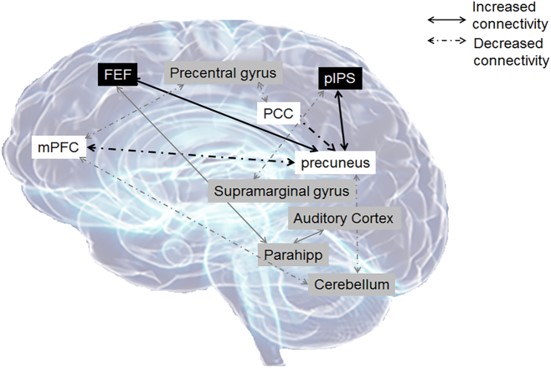behavioural
epigenetics

The author, Margaret Tyson, was an honorary researcher at the Institute of Cancer Sciences, The University of Manchester and now researches epigenetics particularly of cancer and schizophrenia. She also runs Manchester Amputee Fitnesss Initiative and Karen's Page.
 |
Schizophrenia - secondary outcomes
Cardiac mortality and morbidity
The risk of cardiovascular disease (CVD) is higher in people with psychotic illness and specifically schizophrenia (SC) than in the general population (1,2). Schizophrenia itself increases the risk of CVD because of cardiac autonomic dysfunction (1)(3-5) especially in those with negative SC symptoms and can be used as a marker for SC (3) . Increased obesity due to SC can lead to CVD (5). Antipsychotics can increase arrhythmia especially due to the hERG-potassium channel. Clozapine can cause cardiomyopathy (6). Newer drugs can lead to metabolic syndrome which increases risk (1,2). However Oh et al. (2021) showed there is a deceased CV death rate in SC patients treated with antipsychotics (6).
Tinnitus
Disruption of neural networks in schizophrenia can result in tinnitus (7- 9).
Tinnitus in psychosis/ schizophrenia happens when there is no damage to the actual hearing (7-9) and is perceived as a hallucination.
Other effects on the brain of schizophrenia are hyperactivity of the substantia nigra and prefrontal and striatal hypoactivity and the level of nigrostriatal functional connectivity also predicted the level of psychosis (10) Hyperactivity also results in excess dopamine secretion.
Fig 7 shows that iIn tinnitus patients connectivity between the precuneus and other regions of the default mode network is decreased (10).
Legend to Fig 7 (10) The grey boxes and lines indicate findings that were noted previously, but were not replicated in the current study. FEF, frontal eye fields; pIPS, posterior intraparietal sulci; mPFC, medial prefrontal cortex; PCC, posterior cingulate cortex; parahipp, parahippocampus.
Parkinson's Disease
Hypoactivity of the substantia nigra is indicative of Parkinson’s disease because of loss of dopaminergic neurons (11& 12). As schizophrenics are at an increased risk of developing Parkinson’s disease (13; 14) there appears to be a relationship between the substantia nigral hyperactivity in schizophrenia and hypoactivity in Parkinson’s disease, one extreme perhaps triggering the other.
One study (15) demonstrated that psychosis/schizophrenia associated with Parkinson's disease is probably caused by an imbalance in the ratio of white-matter fibres between areas of the brain associated with psychotic symptoms (frontal lobe, occipital lobe, cingulate gyrus, and hippocampus) and those associated with the motor symptoms of Parkinson's disease (the substantia nigra and globus pallidus) (15) .
References
1.Howell S, Yarovova E, Khwanda A, et al. Cardiovascular effects of psychotic illnesses and antipsychotic therapy. Heart (British Cardiac Society) 2019;105(24):1852-59. doi: 10.1136/heartjnl-2017-312107 [published Online First: 2019/08/24]
2. Kritharides L, Chow V, Lambert TJ. Cardiovascular disease in patients with schizophrenia. The Medical journal of Australia 2017;206(2):91-95. doi: 10.5694/mja16.00650 [published Online First: 2017/02/06]
3. Huang WC, Liu WS, Chen TT, et al. Parasympathetic activity as a potential biomarker of negative symptoms in patients with schizophrenia. Asia-Pacific psychiatry : official journal of the Pacific Rim College of Psychiatrists
4 Lee K, Park J, Choi J, et al. Heart rate variability and metabolic syndrome in hospitalized patients with schizophrenia. Journal of Korean Academy of Nursing 2011;41(6):788-94. doi: 10.4040/jkan.2011.41.6.788 [published Online First: 2012/02/09]
5 Bengtsson J, Bodén R, Olsson EMG, et al. Autonomic modulation networks in schizophrenia: The relationship between heart rate variability and functional and structural connectivity in the brain. Psychiatry research Neuroimaging 2020;300:111079. doi: 10.1016/j.pscychresns.2020.111079 [published Online First: 2020/04/14]
6. Oh J, Nam H, Park S, et al. Decreased cardiovascular death in schizophrenia patients treated with antipsychotics: A Korean national cohort study. Schizophr Res 2021;228:417-24. doi: 10.1016/j.schres.2021.01.006 [published Online First: 2021/02/09]
7. ffytche DH, Wible CG. From Tones in Tinnitus to Sensed Social Interaction in Schizophrenia: How Understanding Cortical Organization Can Inform the Study of Hallucinations and Psychosis. Schizophrenia Bulletin 2014;40(Suppl 4):S305-S16. doi: 10.1093/schbul/sbu041
8. Dolberg D, Schaaf H, Hesse G. [Tinnitus in primarily schizophrenic patients]. Hno 2008;56(7):719-26. doi: 10.1007/s00106-008-1765-3 [published Online First: 2008/06/14]
9. Husain FT, Schmidt SA. Using resting state functional connectivity to unravel networks of tinnitus. Hearing research 2014;307:153-62. doi: 10.1016/j.heares.2013.07.010 [published Online First: 2013/07/31]
10. Schmidt SA, Carpenter-Thompson J, Husain FT. Connectivity of precuneus to the default mode and dorsal attention networks: A possible invariant marker of long-term tinnitus. NeuroImage : Clinical 2017;16:196-204. doi: 10.1016/j.nicl.2017.07.015
11. Yoon JH, Minzenberg MJ, Raouf S, et al. Impaired Prefrontal-Basal Ganglia Functional Connectivity and Substantia Nigra Hyperactivity in Schizophrenia. Biological Psychiatry;74(2):122-29. doi: 10.1016/j.biopsych.2012.11.018
12. Smith DJ, Langan J, McLean G, et al. Schizophrenia is associated with excess multiple physical-health comorbidities but low levels of recorded cardiovascular disease in primary care: cross-sectional study. BMJ Open 2013;3(4) doi: 10.1136/bmjopen-2013-002808
13. Cacabelos R. Parkinson’s Disease: From Pathogenesis to Pharmacogenomics. International Journal of Molecular Sciences 2017;18(3):551. doi: 10.3390/ijms18030551
14. Gabilondo A, Alonso-Moran E, Nuño-Solinis R, et al. Comorbidities with chronic physical conditions and gender profiles of illness in schizophrenia. Results from PREST, a new health dataset. Journal of Psychosomatic Research 2017;93:102-09. doi: https://doi.org/10.1016/j.jpsychores.2016.12.011
15. Zhong J, Wu S, Zhao Y, et al. Why psychosis is frequently associated with Parkinson's disease? Neural Regeneration Research 2013;8(27):2548-56. doi: 10.3969/j.issn.1673-5374.2013.27.006
